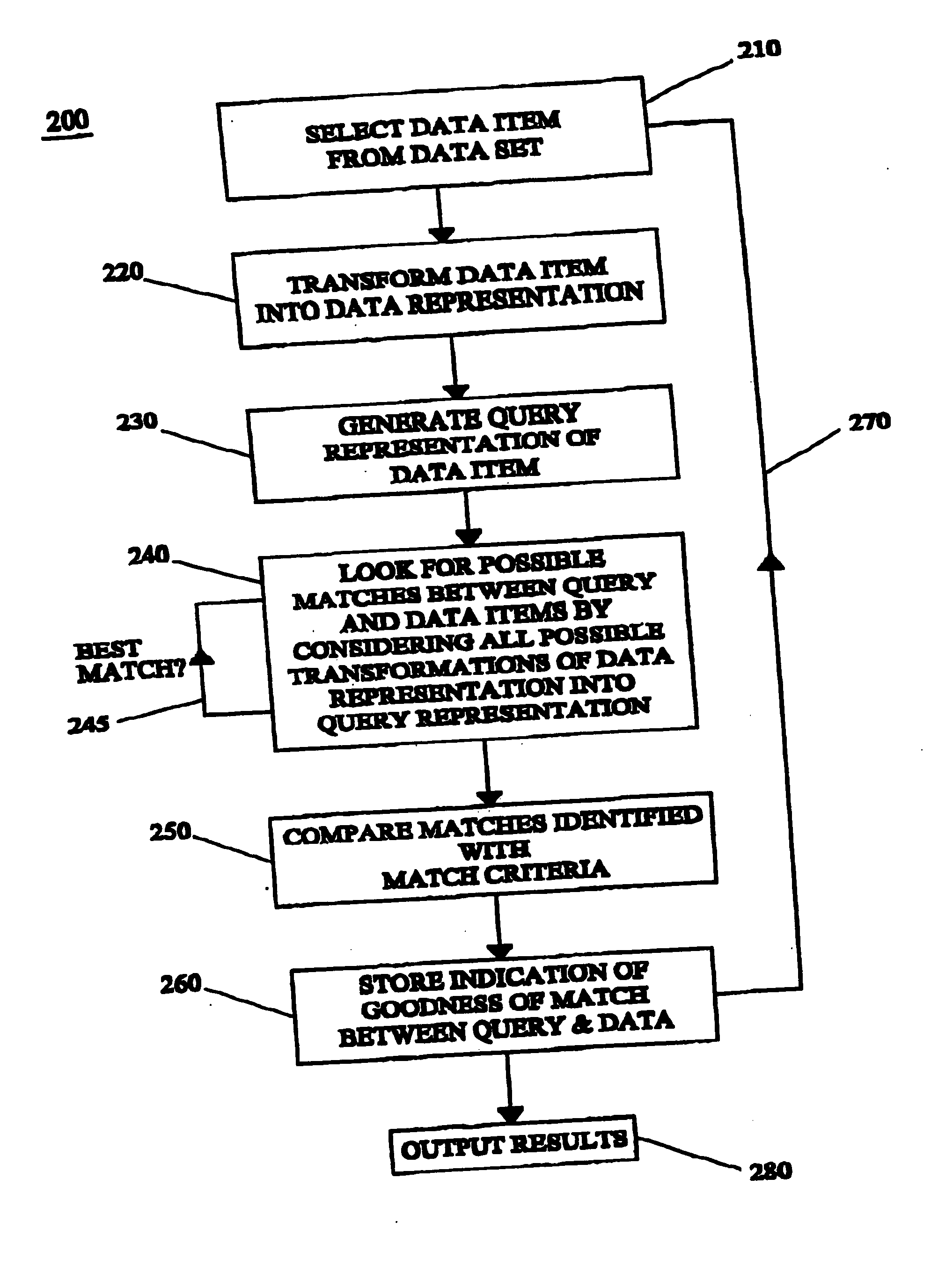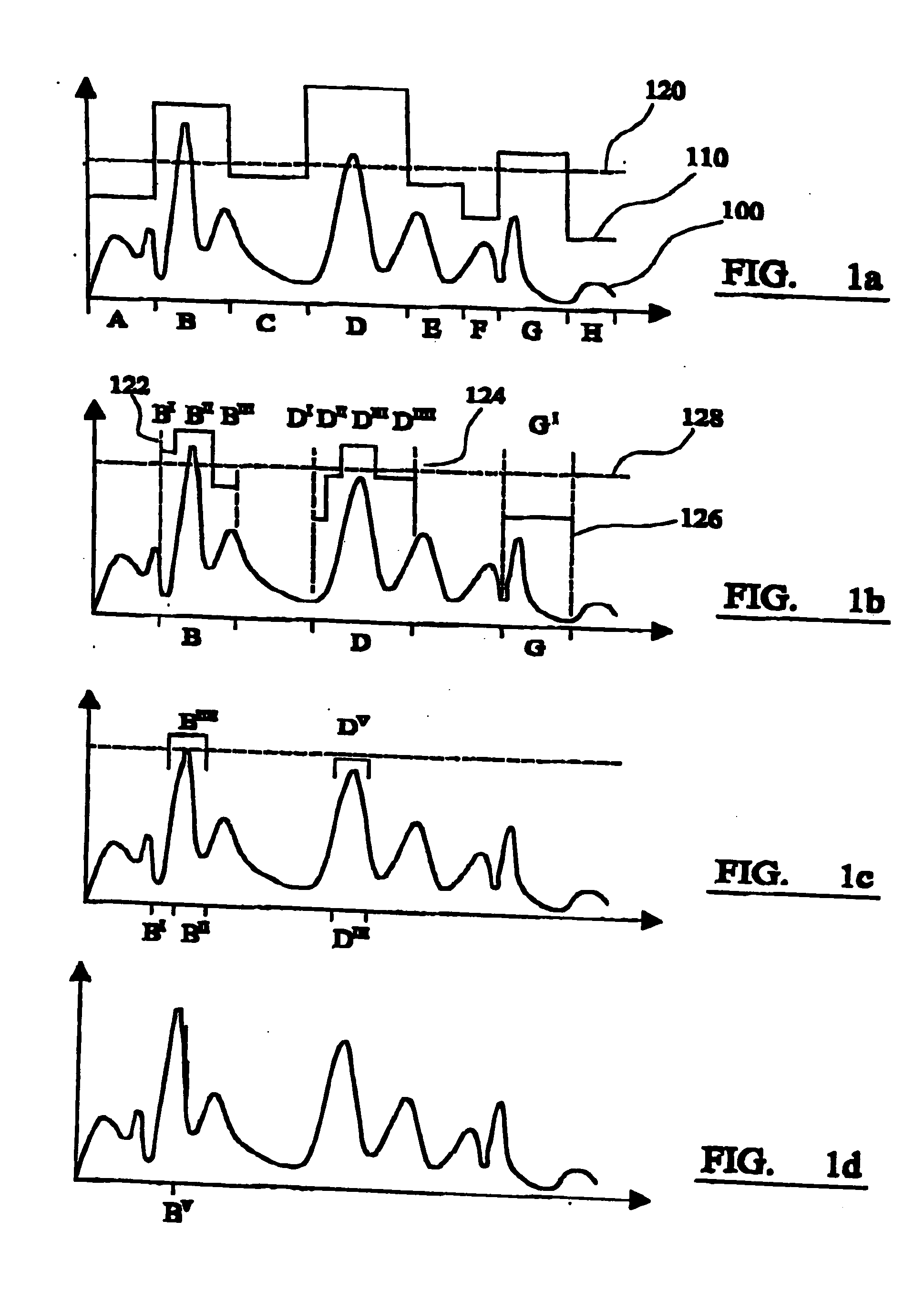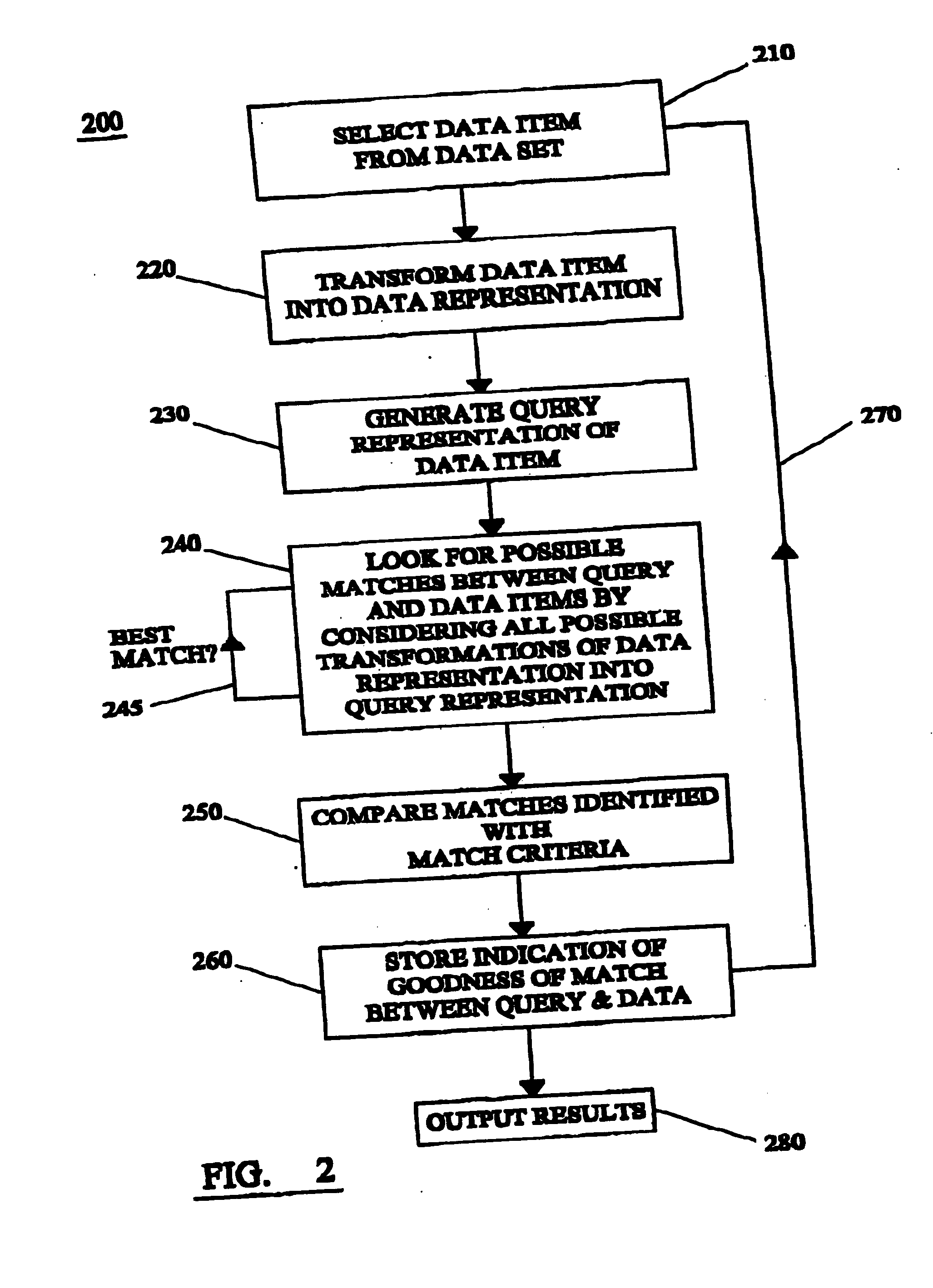Matching engine
a matching engine and engine technology, applied in chemical machine learning, instruments, molecular structures, etc., can solve the problems of poor performance on non-trivial matching problems, inability to find a good solution in a practicable time, and inability to always be possible, so as to reduce processing resource requirements, improve performance, and increase the size of sketched regions
- Summary
- Abstract
- Description
- Claims
- Application Information
AI Technical Summary
Benefits of technology
Problems solved by technology
Method used
Image
Examples
Embodiment Construction
[0025] As an example, the problem of automatically matching molecules in order to maximise some similarity criterion will be discussed. This is an important problem in the drug development process. Chemists will have a ‘query molecule’ of known behaviour and wish to use it to search a database for similar molecules. This can be viewed as an optimisation problem i.e., finding the best alignments (matches, transformations) between a query item and a database of items (molecules) from a large number of possible molecules and their alignments. The query item molecule and database molecule items can be represented as patterns by placing nodes at regular intervals on their surface, and a measurement vector (containing characteristic properties of the molecule, e.g. spatial and eletrostatic information) can be associated with each node. Thus, a pattern matching problem results.
[0026] In this context the term node is considered to mean . . . and includes . . . Further, the term measueremen...
PUM
 Login to View More
Login to View More Abstract
Description
Claims
Application Information
 Login to View More
Login to View More - R&D
- Intellectual Property
- Life Sciences
- Materials
- Tech Scout
- Unparalleled Data Quality
- Higher Quality Content
- 60% Fewer Hallucinations
Browse by: Latest US Patents, China's latest patents, Technical Efficacy Thesaurus, Application Domain, Technology Topic, Popular Technical Reports.
© 2025 PatSnap. All rights reserved.Legal|Privacy policy|Modern Slavery Act Transparency Statement|Sitemap|About US| Contact US: help@patsnap.com



